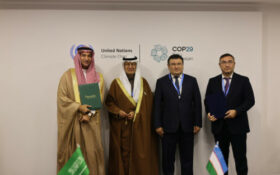Paraclete Energy, a Michigan based lithium ion materials supplier, made a strong push for the acceptance of prelithiated anode materials at the Battery Show Europe last week, with the launch of prelithiated SM-Silicon.
Prelithiated nanoparticle SM-Silicon/PL™ has a proprietary surface modifier that acts as a protective shell from air and moisture and has an artificial SEI for cycle stability. Not only will customers be able to incorporate Paraclete Energy’s cycle stable SM-Silicon™ into their anode to achieve the highest capacity possible for their batteries, but they will also be able to reap the benefits mentioned an aqueous compatible prelithiated anode in short reduced formation time, said the company.
“Prelithiation is very appealing, said Jeff Norris, CEO of Paraclete Energy. “Unlike many standard battery improvement techniques which fight for a fraction-of-a-percent performance increase, any percentage gain from prelithiation is gained as a 1:1 ratio towards overall battery energy density.
“Additionally, with adequate prelithiation, minimal formation cycles that dramatically slow the production process down will not be required, thereby cutting the time to manufacture batteries significantly which has a dramatic positive impact on reducing cost and an equal impact on increasing the total annual manufacturing capacity of the facility. Prelithiation should bring about a cost-reduction shift across the entire industry, or at least to those that embrace it.”
Researchers have tried to eliminate the formation process by adding extra lithium to the battery anode in this prelithiation process. One such electrochemical exotic method not adopted by industry is a method that involves building a pseudo-battery, charging it to a given capacity, isolating the battery anode and then building a new battery with the anode containing this extra lithium.
This process adds additional manufacturing steps, as well as capital equipment, and uses inert atmospheres—all of which prevent commercialisation.
Another exotic method that has also not been adopted by industry incorporates metallic lithium particles into the anode electrode. However, these lithium particles are incompatible with aqueous slurry mixing techniques and thereby pyrophoric so they must be applied after electrode casting/drying in a separate process. This increases complexity and costs, limiting widespread adoption.
Ideally, prelithiation must be compatible and safe to interact with aqueous slurry processing and not introduce additional processing steps. Paraclete Energy’s methods enable aqueous compatibility by preventing the violent chemical reactions typically seen with prelithiated materials.
Additionally, electrochemical cycling is improved given Paraclete’s SM-Silicon™ family of surface modified products acts as an artificial solid electrolyte interphase (SEI) limiting undesirable side reactions. This method can be fully compatible with aqueous slurries and does not add additional processing, making it the most logical approach to this coveted lithium-ion battery improvement. Paraclete can manufacture tons of many types of nanoparticle silicon metal, the premier silicon product is SM-Silicon™.
SM-Silicon™ is an appealing anode material because its capacity, nearly 3,575 mAh/g, is ten times that of graphite, according to the firm.












